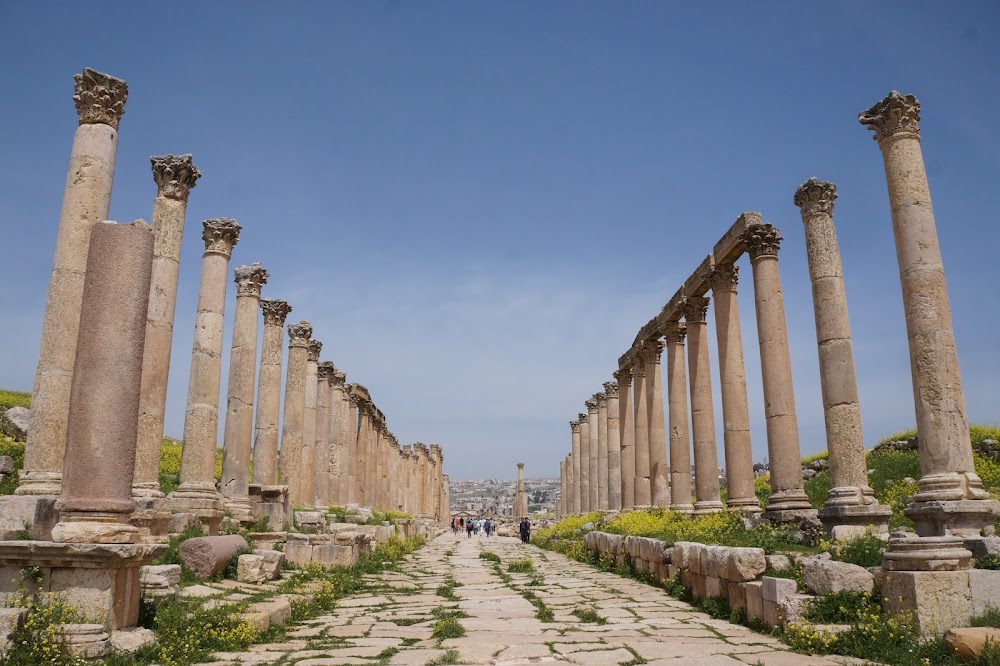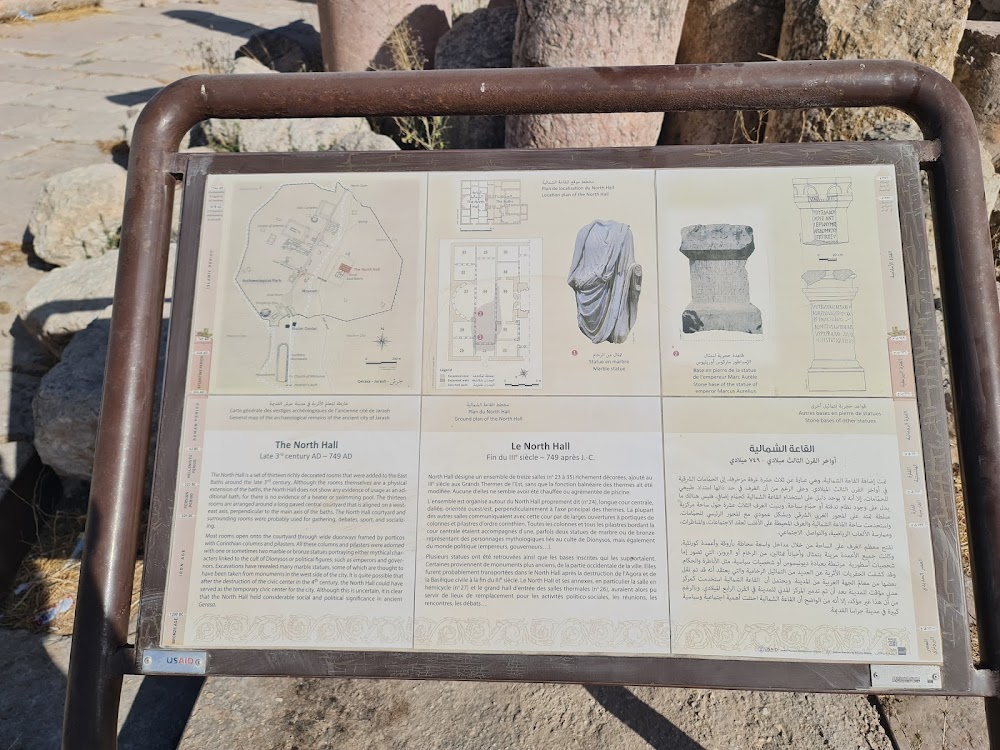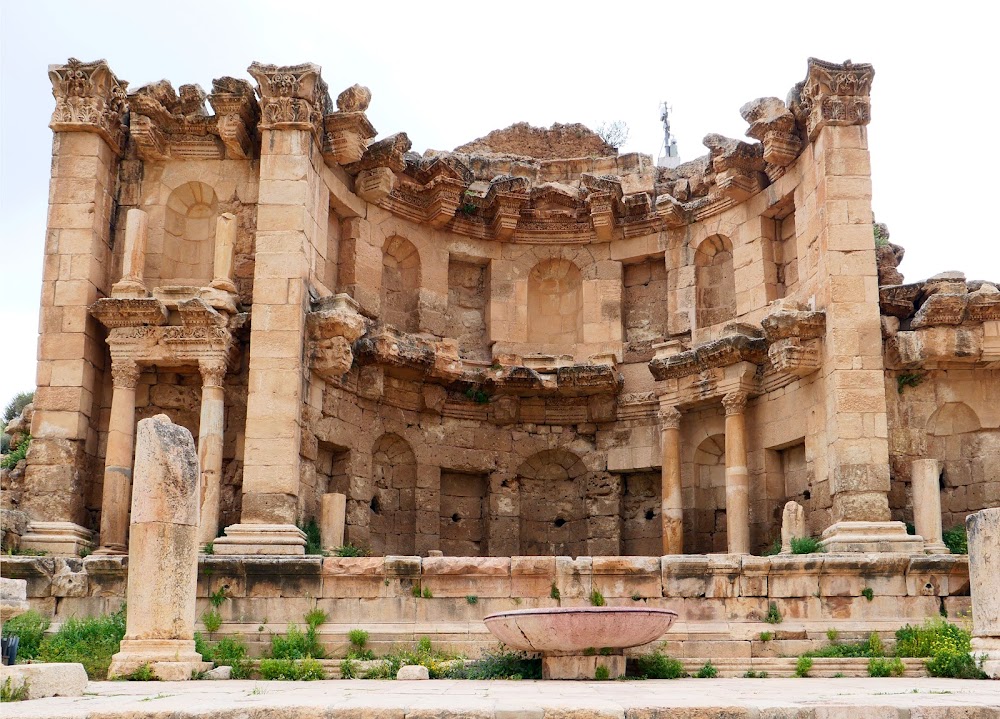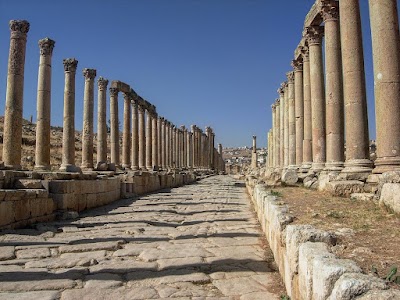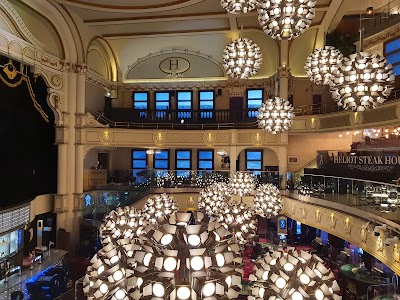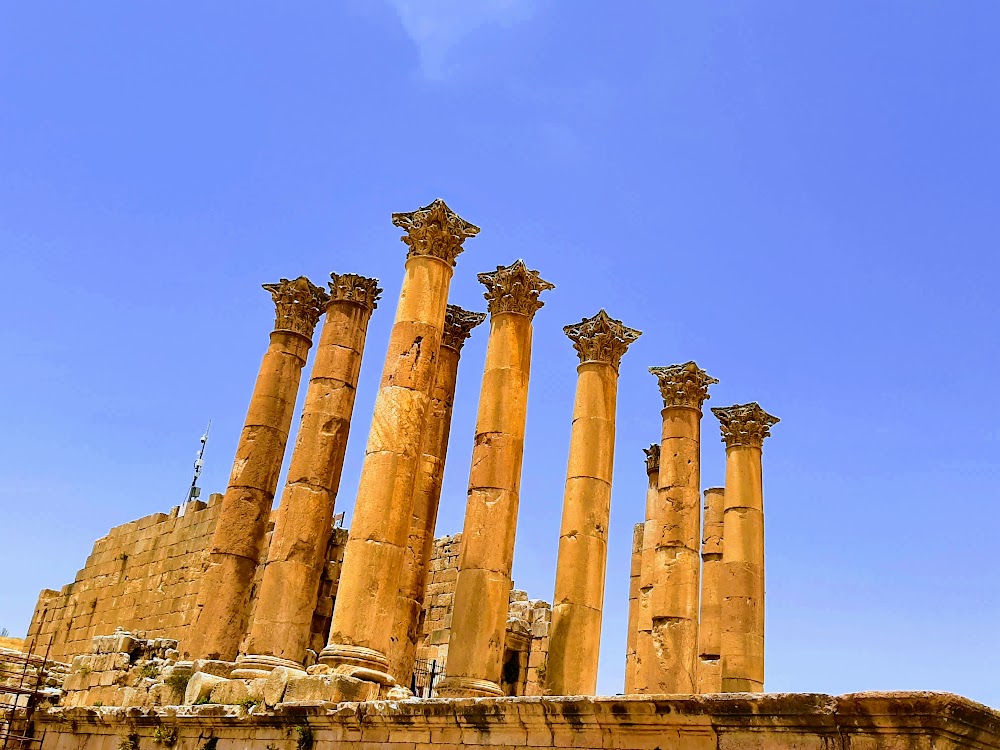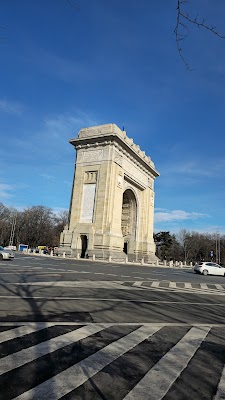Cardo Maximus (كاردو ماكسيموس)
Overview
In the ancient city of Jerash, located in present-day Jordan, lies the magnificent Southern Cardo Maximus, often referred to simply as the Cardo Maximus. This grand colonnaded street served as the main thoroughfare of the city, embodying the architectural prowess and urban sophistication characteristic of Roman city planning.
Constructed during the reign of Emperor Trajan in the early 2nd century AD, the Southern Cardo Maximus stretches approximately 800 meters in length and is about 12 to 15 meters wide. Its robust limestone paving slabs, carefully laid to create a smooth surface, are still visible today, evoking images of the bustling ancient life that once filled this vibrant thoroughfare. The meticulous craftsmanship ensured a slight convex shape, allowing for efficient drainage by channeling rainwater into side gutters.
Flanked by rows of towering columns adorned with exquisite Corinthian capitals, the Cardo Maximus showcased some of the finest examples of Roman artistry. These majestic columns supported covered porticos, providing a sheltered space where citizens could walk, shop, and socialize, away from the sun and rain. Under these porticos, an assortment of shops and public spaces flourished, making the street the heart of commercial and social activity in Jerash.
More than just a market street, the Cardo Maximus symbolized Jerash's significance and prosperity within the Roman Empire. Grand arches and gateways adorned with intricate carvings punctuated the thoroughfare, marking different segments of the city. The street's layout was meticulously designed to intersect with the city's main roads, creating a highly organized urban grid that facilitated trade and movement.
One of the most iconic features of the Southern Cardo Maximus is the South Tetrapylon, a monumental structure marking a major intersection. This tetrapylon consists of four sets of columns that create grand archways on each side, accommodating both foot and chariot traffic. Acting as a focal point, the South Tetrapylon underscores the Cardo's role as the city's backbone, providing directions and enhancing connectivity.
Trade and Religion often intertwined along the Southern Cardo Maximus, with temples like the grand Temple of Artemis easily accessible from the street. These religious sites attracted both locals and pilgrims, further elevating the Cardo's status as a cultural and spiritual hub.
In addition to markets and temples, the Southern Cardo Maximus also led to significant public buildings, including bathhouses and theaters. These structures were central to Roman public life, catering to the city's needs for venues that encouraged socialization, entertainment, and relaxation. Among these was the South Theater, a magnificent amphitheater capable of seating thousands, hosting plays, orations, and even gladiatorial contests.
The Cardo Maximus also reflected the technological advancements of the Roman Empire. Remarkably sophisticated sewer systems ran beneath the street, channeling waste away from the city and promoting public health and sanitation. Public fountains strategically placed along the street ensured that fresh water was readily available to the populace, meeting even basic needs with ingenuity and style.
Over the centuries, Jerash and its Cardo Maximus have witnessed various shifts in power, transitioning from Roman to Byzantine and later Umayyad rule. Each era left its mark, contributing to a rich mosaic of cultural and architectural influences. Although earthquakes and invasions have caused significant damage, the resilience seen in the ruins today stands as a testament to the craftsmanship and architectural foresight of its creators.
Today, the Southern Cardo Maximus is part of the archaeological site known as Jerash or Gerasa, attracting visitors from around the world. Walking its length, one can't help but feel transported back in time, imagining the vibrant life that once filled its stones. The enduring legacy of the Cardo Maximus rests not only in the stones and columns but also in the stories of the people who called Jerash home.


